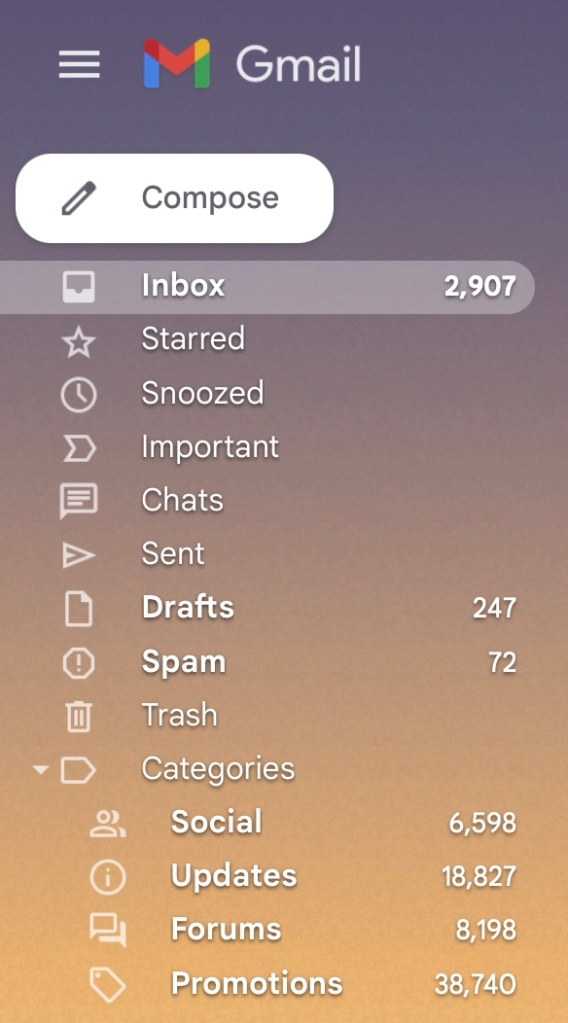Disgraced fraudster Sam Bankman-Fried – the notorious SBF – might just be a digital hoarder.
According to a recent Business Insider report, the former FTX CEO’s laptop is inundated with so much data that FBI officials are working overtime analyzing the contents.
But SBF is far from alone in its apparent reluctance to leave with large amounts of data.
In fact, digital hoarding — a subtype of hoarding disorder that involves collecting and struggling to part with excessive amounts of digital material — is a growing problem in the United States and beyond.
The Diagnostic and Statistical Manual of Mental Disorders (DSM) recognizes hoarding disorder as a mental illness.
Now, some academics are wondering if it’s time to add digital hoarding to the bible of psychiatry.
According to work by technology researcher Maitrik Kataria and colleagues at digital product engineering firm Simform, the average American has at least 40 apps installed on their phone, but uses less than 50%.
Millions of Americans have inboxes with over 1,000 unread emails.
And about 60% of Americans never delete photos or videos from their digital devices.
Dr Darshana Sedera, assistant dean and director of the Digital Enterprise Lab at Southern Cross University, Australia, warns that digital hoarding is on the rise – and the consequences could be serious.
His research, he says, shows that the collection and storage of digital content tends to increase as our “technology step count” increases.
Dr Sedera, who has published extensively on the disorder, said there appears to be a positive correlation between the number of social media platforms a user uses and the amount of content they store.
Additionally, his team observed a strong relationship between the number of storage platforms (e.g., Google Drive, iCloud, etc.) used and an increase in digital hoarding.
Faced with this fairly new phenomenon, not all generations are affected in the same way.

In one study, Dr. Sedera and his colleagues compared the digital hoarding behaviors of Generation X, which they define as those born between 1965 and 1980, and Generation Y, born after 1980.
“We found that both groups had symptoms of digital hoarding,” he noted.
However, millennials displayed “much stronger digital hoarding tendencies.”
With younger generations, especially digital natives, it makes sense to expect even higher levels of hoarding behavior, according to Sedera.

Digital hoarding has consequences for mental health.
“When a person is suffering from the symptoms of digital hoarding (constant acquisition, difficulty getting rid of, propensity to clutter), there is a high likelihood that they are experiencing adverse mental or psychological conditions,” Sedera said.
Dr. Bárbara Perdigão Stumpf, a Brazilian psychiatrist who has also studied the dangers of the disorder, told the Post that “comorbidity is common” – particularly major depressive disorder, anxiety disorder and even attention deficit disorder with hyperactivity (ADHD).
However, not all digital hoarders are created equal, according to psychologist Dr Nick Neave.
The British academic told the Post that, “in research led by Dr Kerry McKellar and published in the journal Interacting with Computers in 2020, we found that digital hoarding was relatively common, but there seemed to be different ‘types. “of digital hoarder, with their hoarding motivated by different reasons.

These groups have been labeled as follows:
Anxiety
People who fear getting rid of any information they might need in the future, either as evidence or as a reminder. (This “just in case” mentality is often a set of beliefs of physical hoarders.)
Compliance Focused
Those who retain digital files to comply with policies and procedures (company related, government related, etc.) That said, these users tend to delete files without a second thought once they are obviously more needed.
Focused on disengagement
This category is for people who are completely overwhelmed by the amount of emails or files they have accumulated, but choose not to delete them in case they accidentally get rid of something important.
Collection oriented
These are people who keep their data organized but very rarely delete any beyond the obvious spam. They tend to use external devices to back up their files and see this role as part of their identity, especially in the workplace.

In fact, “much of the digital hoarding is driven by the workplace: endless emails and documents circulating with people often unsure of data retention, storage, and deletion policies,” a said Dr. Neave. “People often send files to everyone because they’re worried about ‘missing people’ or being seen as not doing a ‘good job’.
“This creates an environment where most employees keep digital data they don’t need – and can be a major data protection issue. And the environmental costs of running data-heavy servers digital are mostly useless.
As psychology and technology writer Sakshi Udavant noted last year, digital hoarding also seems to have a particularly dark side: revenge.
Studies show that individuals regularly admit to hoarding files with the intention of weaponizing them in the future.
Revenge porn, a type of digital abuse in which an individual shares sexually explicit images without the consent of those photographed, is one of the most harmful examples of this weaponization.

